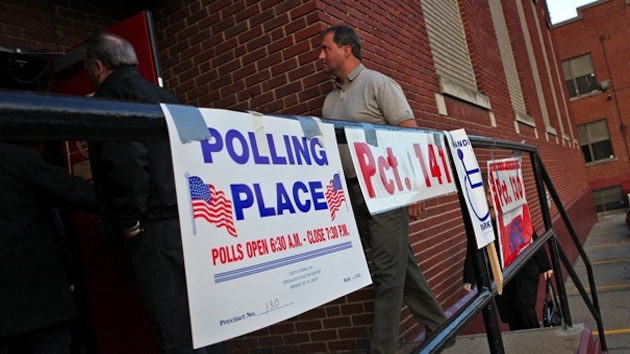

When the dust settles, Republicans will net 9 seats in the U.S. Senate, assuming control of what was once referred to as the “most deliberative body in the world” for the first time since 2006. With votes still being counted in more than a dozen congressional districts, Democrats increasingly face the reality they will suffer a net loss of, at best, 13 seats and, at worst, 16. The GOP gains bled into the gubernatorial contests in blue and purple states, which were often cited as the only potential silver lining for the Democrats.
But let’s remember, none of this was expected or predicted, despite what you are hearing now. In fact, there was an active campaign during early voting — which we will discuss further in the coming days — to deceive the American people as to the state of the races.
That said, out of all the contests decided in this election, PPD’s election projection model misfired on just one Senate election, well sort of — because I was out-voted by my cohorts on the North Carolina Senate race, which I thought Tillis would win — and the mildly-contested Maryland gubernatorial race, making PPD’s election projection model the most accurate model of the 2014 midterm election cycle, hands down.
The last-minute #Obama robo-call for @SenatorHagan has me thinking I'm wrong. Dems know black vote looks shy, & @ThomTillis may have #NCSen
— Richard Baris (@Peoples_Pundit) November 4, 2014
Though we didn’t lay out district-by-district predictions as some other election projection models did, we gave a detailed analysis that predicted a net gain of 12 to 14 seats in the House with our generic ballot. Ironically, considering all our criticism of pollsters — who we repeatedly argued were overestimating Democratic support — Mr. Tillis may just prove us to have our own liberal bias.
Of course, our debut would be meaningless if not for the roughly 250,000 viewers who routinely checked our Senate election analysis and, for that, you’ve all made us feel blessed and humbled. We truly appreciate each and every single one of you beyond written expression.
We began to publish this election projection model precisely because we knew — after years of data analysis — most of these other pundits are full of crap. We repeatedly called them out, particularly Nate Silver at FiveThirtyEight. Larry Sabato at the Crystal Ball, whom I deeply respect, was frankly indefensible on Arkansas and other contests. The phonies at the Huffington Post, Nate Cohen, the bogus NYT UpShot, and perhaps the worst pretentious pundit of them all, Chris Cillizza at the Washington Post, are the biggest losers of the cycle.
Make no mistake, many of the pundits out there are charlatans, who have no idea what they are talking about and, in fact, talk about what they are told to talk about. They are no smarter than you, so don’t let them convince you that they are. They view polls — just like you — and think up elaborate and delusional interpretations of the data.
If Ed Gillespie, who by the way we viewed to be the sleeper, has taught us a valuable American lesson this cycle, it is that your vote and your voice matters more than their Beltway opinions. The pollsters and pundits have lost their credibility and are clearly out-of-touch with the American people, two flaws which are certainly reliant upon each other.
We are going to name and shame many of these people in the coming days, but for now, we thought it might be best to simply thank our viewers and readers, and talk a little bit about why we were right and they were wrong.
First, we’ve consistently stressed that we are a “big picture” fundamental model with decades of data helping to guide us through the media-constructed arguments of distraction. In American politics, there are several variables that decide the outcome of elections. Sean Trende of RCP had an excellent post-election analysis that explained the difference between “fundamentals” vs. “choice” models, and we largely agree with his argument.
In 2014, these variables always favored the Republican Party, particularly in Alaska, Arkansas, Montana, South Dakota and West Virginia. Then, it became clear very early that viable Republican challengers in Colorado, Iowa and North Carolina would unseat incumbent Democrats.
I am not going to repeat the arguments, but it was fairly easy to see why certain purple states ( Colorado and Iowa specifically), were in deep trouble. Early in the cycle, we shook our heads in disbelief as these people misled you for ratings, page hits, or likely even worse, ideological bias.
As the president correctly noted at Wednesday’s brutal post-election press conference, “Republicans had a really good night.” Indeed, they did. And if you have been a loyal reader of PPD, then this would’ve come as no surprise.
We are going to add to this article and this argument in the coming days. But, in the meantime, don’t let the president or the pundits fool you anymore. Read — or, better yet subscribe — to PPD. If you do, then next time you will be listening to the pundits and pollster shaking your heads in disbelief.








Setsurinvich / November 5, 2016
you mean like how you misfired on the mass governor’s race, the Alaska governor’s race, as well as the one in CT and Colorado? , at least Sabato got those right
/